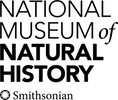"

Description:
An illustration of how Homo neanderthalensis may have looked.
Included On The Following Pages:
- Life (biota)
- Cellular
- Eukaryota (eukaryotes)
- Opisthokonta (opisthokonts)
- Metazoa (animals)
- Bilateria (bilaterians)
- Deuterostomia (deuterostomes)
- Chordata (Chordates)
- Vertebrata (vertebrates)
- Gnathostomata (jawed fish)
- Osteichthyes
- Sarcopterygii (Lobe-finned fishes)
- Tetrapoda (terrestrial vertebrates)
- Amniota (amniote)
- Synapsida (synapsids)
- Therapsida (therapsid)
- Cynodontia (cynodonts)
- Mammalia (Mammal)
- Theria (Therians)
- Eutheria (eutherian)
- Placentalia (placental)
- Boreoeutheria
- Euarchontoglires (Primates, Glires, and Allies)
- Euarchonta
- Primates (primates)
- Haplorrhini
- Anthropoidea
- Catarrhini (Apes and Old World Monkeys)
- Hominoidea (ape)
- Hominidae (great apes and humans)
- Homo (Ancestral and Modern Humans)
- Homo neanderthalensis (Neanderthal)
This image is not featured in any collections.
Source Information
- license
- cc-by-nc-sa-3.0
- copyright
- Natural History Museum, London
- provider
- Natural History Museum
- original
- original media file
- partner site
- Natural History Museum Species of the day
- ID


